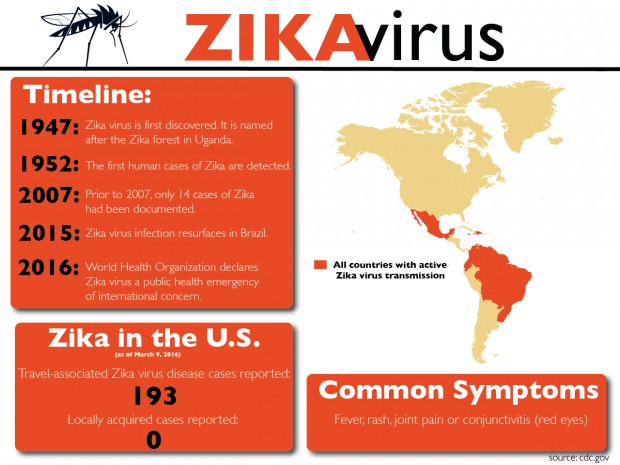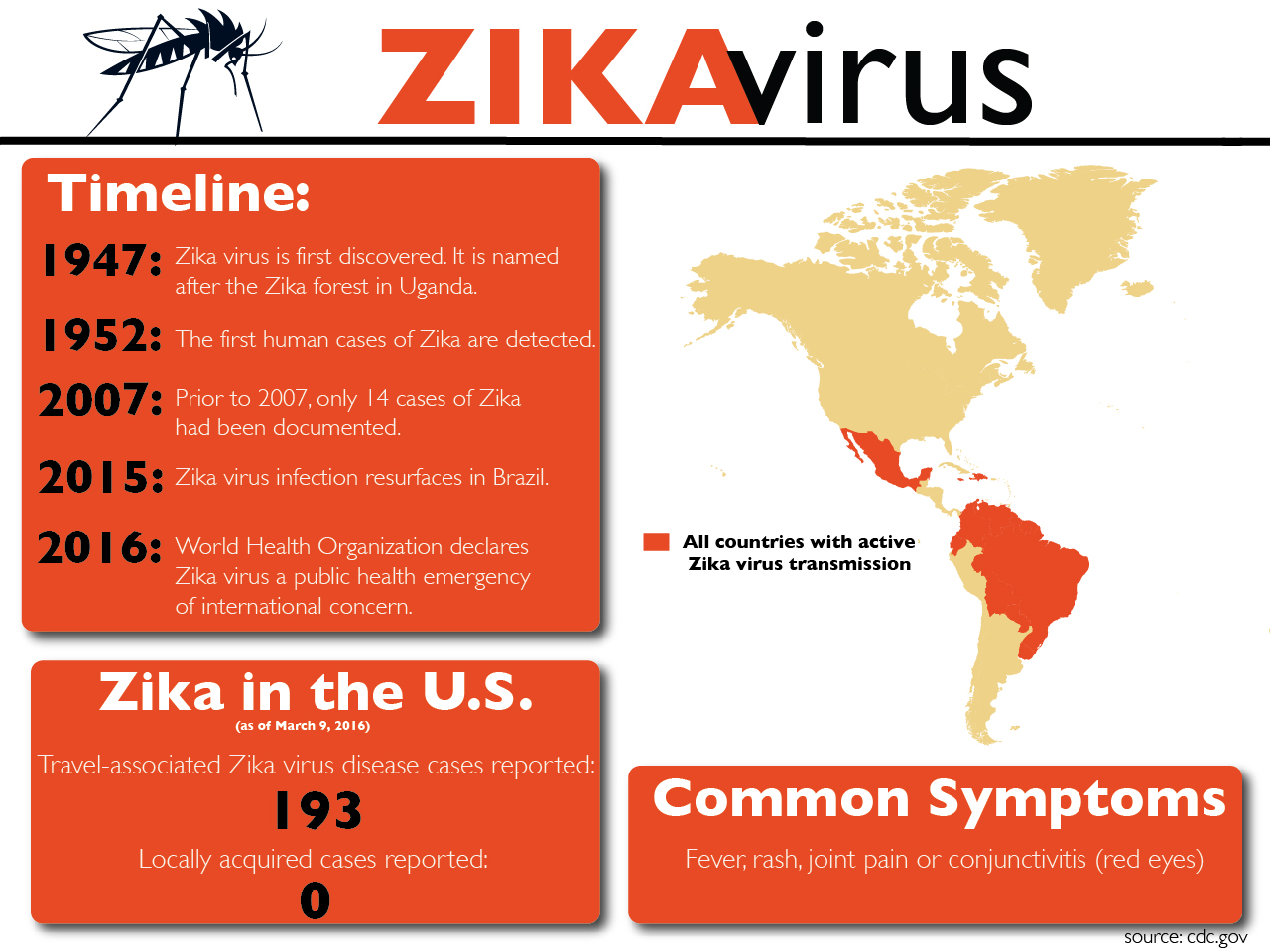
Zika, a tropical disease linked to birth defects, is making its way through the Americas, and the Centers for Disease Control and Prevention is telling travelers to take precautions before arranging trips to Central or South America.
Central and South America are popular destinations for spring break and study abroad trips. Senior Angel Paucar had no idea Zika was making its way through South America when he was in Ecuador this past winter.
“(I) haven’t heard of it in Ecuador or the areas I was around,” Pauca said.
According to the CDC, the virus is spread through infected mosquitoes. Common symptoms include fever, rash, joint pain and conjunctivitis (red eyes). It can also be transmitted through sexual contact and from mother to child.
“The illness is usually mild with symptoms lasting for several days to a week after being bitten by an infected mosquito. People usually don’t get sick enough to go to the hospital, and they very rarely die of Zika,” the CDC website said.
The virus itself is still dangerous because there is no vaccine nor is there any medicine to treat it, though the symptoms from the virus are treatable.
Once a person has been infected with the virus, they are likely to be protected in the future after it has left their system.
Students traveling to areas that have cases of the infection should be aware that some places, like Brazil, have more cases of the virus compared to places like Ecuador.
Junior Cristina Medina travels to Ecuador often with her family and vacationed there last winter. She made sure to read up on the virus and find out the facts before going.
“I guess I do worry that it can potentially affect my family in Ecuador, and it does make me think about the risks when I visit again,” said Medina.
Pregnant women should be especially cautious when traveling to areas with more cases of the virus. According to the CDC, if a pregnant woman is bitten by an infected mosquito, the chances of the baby being born with microcephaly are high. Children with the disease are born with a smaller head than normal, and their brains are smaller and less developed, according to the CDC.
“I think it is something to be afraid of since it has affected so many people already, but since it’s just not here (United States) yet I feel like no one is taking real precautions,” said Medina. “But it’s like any serious virus, which is somewhat scary because it’s so new and people still don’t know how to fight it back.”
There is no vaccine for this virus. People traveling to infected areas should wear long sleeves and stay in air conditioned places. For more information or prevention tips go to the CDC’s website.
Samantha Yang can be reached at yang6578@stthomas.edu.

